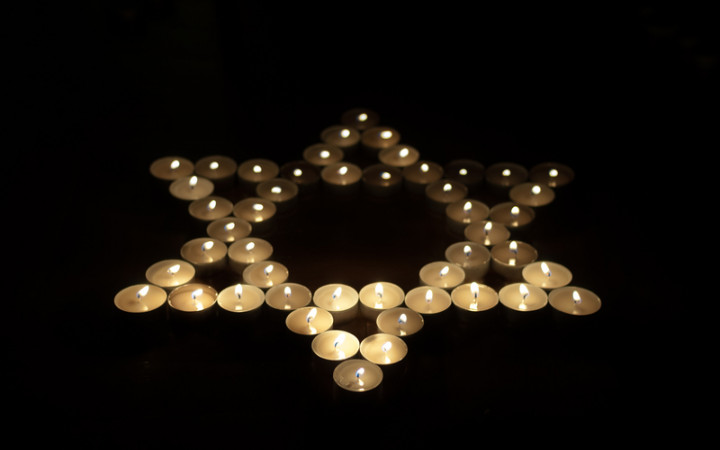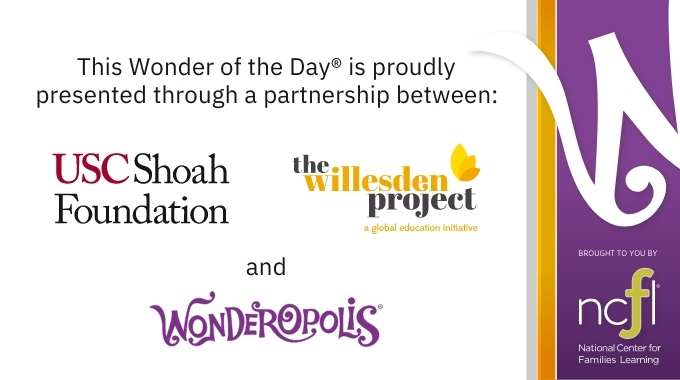Today’s Wonder of the Day was inspired by Lila. Lila Wonders, “what is antisemitism” Thanks for WONDERing with us, Lila!
Antisemitism is a form of anti-Jewish prejudice and discrimination. It can take many forms. Sometimes it focuses on targeting a religion—specifically, people who practice Judaism. Another form of antisemitism falsely believes all Jewish people are of one race. Jewish people can be any race or from any ethnic background. They can also be from any country.
Antisemitism is very old. Over 2,000 years ago, the Romans enslaved Jewish people. Looking for freedom, over time, many Jewish people spread around the world. The people in some places accepted them. In others, they made Jewish people live in separate, crowded parts of town. Later, other areas created segregated sections for Jewish people to live. Sometimes called ghettos, these places were in a closed-off part of a city. Many ghettos were also created during World War II.
Some people’s hate came from religion and traditions different from their own. These biases made it easy for people to treat those of the Jewish faith differently.
From 500 to 1500 C.E., Jewish people were outcasts. Many had to wear symbols on their clothes, such as yellow circles. Others had to wear hats of a certain style. These items showed others they were Jewish. Minority groups are often blamed for a country’s problems. In many places and times, Jewish people have been a group targeted for blame.
These tales lived into the 1900s when Hitler, in the 1920s and 1930s, made Jewish people the scapegoat for hard times. The Nazis murdered six million Jewish people during the Holocaust because of these stories. Unfortunately, the end of World War II did not stop this practice.
And, while we’d like to think people are more accepting today, antisemetic activities still happen. We see swastikas and anti-Jewish phrases in public and across social media. We have seen violence against Jewish people including bombings of their synagogues—their places of worship. Many of these activities happened before World War II, as well.
We can’t control what others do. But we can make sure we aren’t spreading false information and antisemitism ourselves—that we are using reliable sources to fact check before we share a story. When people are spreading false information, correct it. Explain why it is false. State the facts.
You can also listen to people who have experienced antisemitism to better understand how it feels when it happens. The gallery for this Wonder has a video from our friends at USC Shoah Foundation with Holocaust survivors Esther Clifford and Michelle Cohen-Rodriguez sharing their experiences—as children—with antisemitism.
What about in-person? What should you do about antisemitism when you see it happen? You can be an ally! That’s right. Being there for someone after discrimination happens to them is a great start. Be kind. Be supportive. Listen to how they feel. You can also stand up to bullies. People who name-call and use certain words need to know it’s not okay.
What do you think? Will you stand up to antisemitism the next time you see it happen? Talk with your family or a trusted adult to decide how you will do that. Make a plan now!
Preserving memories are a vital part of the human experience, and USC Shoah Foundation’s Visual History Archive contains over 55,000 testimonies from survivors and witnesses—using audio and video—to educate future generations about the Holocaust and other atrocities, in support of the Institute’s mission to develop empathy, understanding, and respect through testimony so the next generation understands the importance of learning from the Holocaust and making the world a better place. Its IWitness platform contains many of these testimonies that were gathered using recorded interviews to tell the stories of survivors and witnesses. Inspired by the power of story to transform lives, USC Shoah's The Willesden Project combines testimony, technology and music to reshape Holocaust education.
Standards: CCRA.R.1, CCRA.R.2, CCRA.R.4, CCRA.R.10, CCRA.L.3, CCRA.L.4, CCRA.L.5, CCRA.L.6, CCRA.SL.1, CCRA.SL.4, CCRA.W.3, SEL.5





